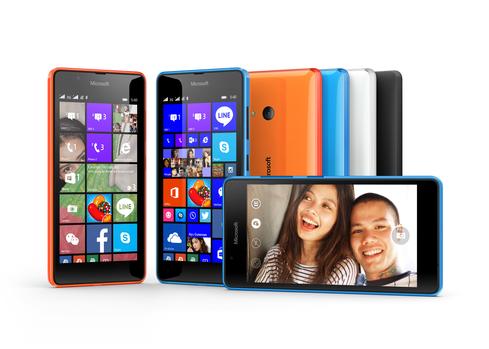A company is reviving the Commodore name (again), this time in the form on an Android smartphone.


5 Ways Microsoft Messed Up Mobile
5 Ways Microsoft Messed Up Mobile (Click image for larger view and slideshow.)
Lovers of nostalgia have a new smartphone option. Entrepreneurs from Italy have acquired the rights to the old Commodore line of computers (including the iconic Commodore 64) and are reviving the Commodore name with an Android smartphone called the Commodore PET.
The Commodore name, which has bounced around through several bankruptcies and legal proceedings, still has a lot of recognition for IT pros of a certain age. Just hearing the name probably strikes a special chord with many.
To top it off, the smartphone will come pre-installed with emulators to allow users to play many of the classic Commodore and Amiga games of the time. According to Wired, the company is working with software companies to provide a pre-existing library of games for the phone's release.
[This isn't the first Commodore revival. Read Commodore 64 Replica Boasts Modern Components, Retro Look.]
As for the phone itself, it seems to measure up to most second-line Android phones available now.
The smartphone will feature a 5.5-inch display with 1920x1080 resolution and a 1.7GHz Mediatek, 64-bit octa-core processor. It comes with a 13-megapixel main camera and an 8-megapixel front-facing camera. Compare that to Samsung's Galaxy S6 Edge, which features a similar screen size but offers 2560x1440 resolution, a 2.1GHz octa-core processor, and a 16-megapixel camera.
One area where the Commodore will likely beat the Edge is battery life. The PET features a 3000 mAH battery, compared to Samsung's 2600 mAH battery. Since the phone has a marginally less impressive display and processor specs, it should tax the battery a little less.
In other words, you won't buy the Commodore PET because it is the best smartphone on the market, but it might be competitive enough that nostalgia puts it over the top. Here's what the phone looks like:
That, in my mind, might be the problem. While I didn't expect the phone to look like it was made in the 80s, I did sort of expect more of a throwback to the original design of the Commodore PET:

(Image: Zagreb Technical Museum via Wikimedia Commons)
Or at least the more iconic Commodore 64:

(Image: PrixeH via Wikimedia Commons)
The phone will also come in the "biscuit brown" of the original Commodore 64, but it seems to me that the color won't be enough. It doesn't look all that different from the back of an LG phone, with the exception of the logo.
Considering you can play C64 games on emulators without the phone, it almost feels like what you are paying for is the C on the back and the right to tell your friends you've got a Commodore phone, so they can marvel at you for a moment.
Granted, had they made the phone look more square and plastic, like a 1980s computer, it wouldn't have functioned like the type of modern phone we would want in our pocket. But maybe just a hint of the trapezoidal bezel of the PET would have been cool, or the iconic rainbow of the C64 running down the back. Still, I love to see the Commodore name back, and I'm looking forward to the idea of playing classic games on a phone more powerful than the original computers that ran them. There's something about a timeless connection to technology that is appealing.
The smartphone comes out this week in select European countries, and there are plans to bring it out in a wider release (the US included) later this year. What do you think? Will this one be on your wish list?
About the Author(s)
You May Also Like







